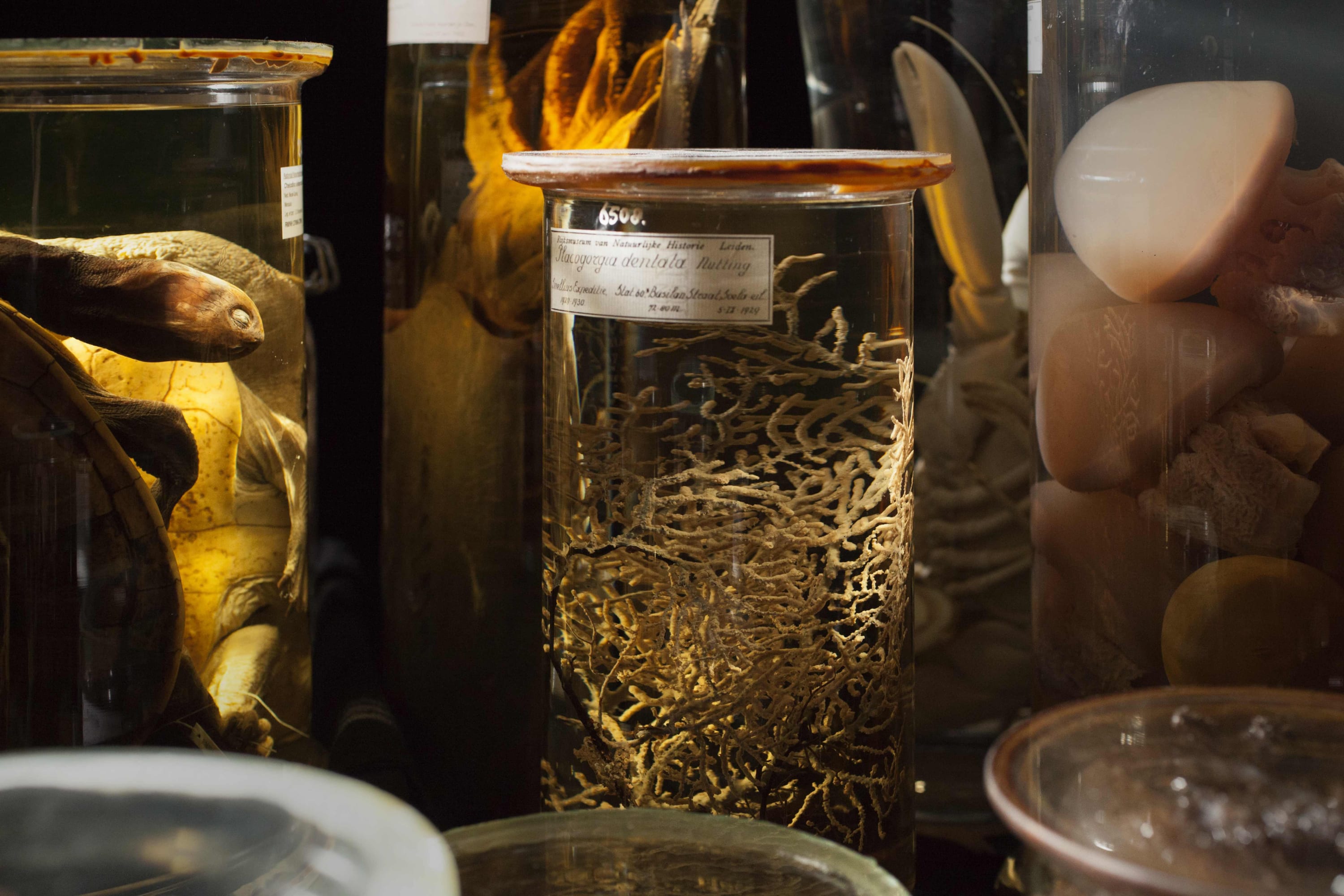Fiona Tan: Moving Image Programme
-
Running in parallel with Fiona Tan's solo exhibition Footsteps, this programme of three moving image works by the artist were available to view online for three weeks from 18 December 2023–7 January 2024.
News from the Near Future (2003) offers what may be considered a prelude to Footsteps – also drawing upon archival footage from the Eye Filmmuseum, here focussing on the recurring theme of bodies of water. Depot (2015) speaks to Tan’s ongoing preoccupation with archival stores and private collections, calling into question the ways in which we represent and interpret history. Archive (2019), which presents a digital construction of the utopian archive of Paul Otlet, poetically explores the concept of using fiction as a mode through which to present the truth, an approach that also informs Footsteps.
Please contact the gallery for further details.
-
 Fiona Tan, News from the Near Future, 2003
Fiona Tan, News from the Near Future, 2003Video projection, black and white tinted, stereo
9 minutes 30 seconds
News from the Near Future is a work composed of archival footage. Tan shows mankind's ambivalent relationship to the element of water: with the mood spectrum constantly shifting, sunny scenes of people walking on the beach are followed by impressive images of ships hunting whales in a stormy sea, and disastrous floods are followed by boats calmly gliding into the sunset. Even though man is not always present, he remains an omnipresent observer through the camera. The images are accompanied by a sound collage of overlapping radio reports in various languages, their static blending with the roar of the wind, the cries of seagulls and the crashing of waves. The colourised sequences possess an almost painterly texture reminiscent of impressionist seascapes. At the same time, the large format of the video projection intensifies the flickering and graininess of the historical celluloid. Even so, we receive this 'News from the Near Future' as if in real time, as it keeps washing over us in its tidal-like filmic repetition and, in doing so, immerses us in the cycle of time.
-
 Fiona Tan, Depot, 2015
Fiona Tan, Depot, 2015HD video installation
22 minutes 41 seconds
Image archives and collections are central themes of Fiona Tan's works. She is particularly interested in the cultural, traditional and individual mesh of relationships that are concentrated in such places. Depot was filmed in the collections of the Berlin Natural History Museum and the Naturalis Biodiversity Center in the Dutch city of Leiden. The close-ups reveal marine creatures, preserved for study purposes, in jars with formaldehyde. A voice-over lists their names and recounts personal childhood memories at the seaside, which blend with fantastic stories about the flora and fauna of the oceans. Because the memories are suffused with appreciation for those life forms, the confrontation with the film images of dead animals strikes us as all the more disconcerting. In the final scene the camera wanders across the preserved skeletons of whales and dolphins. Depot is a melancholy reflection on man's alienation from nature, focusing on personal childhood memories as well as on scientific research and its forms of presentation using the example of the underwater world.
-
 Fiona Tan, Archive, 2019
Fiona Tan, Archive, 2019HD black and white looped video installation
5 minutes 42 seconds
The video work Archive is based on Tan's research on the Mundaneum, a huge archive of index cards and documents created by Paul Otlet (1868-1944) and, initially, Henri La Fontaine in Brussels. In 1934, the catalogues comprised sixteen million index cards. The archive was supposed to collect everything written and all knowledge in this world in filing cabinets and, in doing so, become what Otlet called a 'machine to think the world' (une machine à penser le monde). From today's perspective, the Mundaneum appears to have anticipated virtual search engines. Otlet envisioned a utopian building for it, even a World City which, however, was never built. For Archive, the artist used computer-generated imagery to construct a detailed architectural space, 120 metres in diameter. The building's circular form, a characteristic feature of utopian concepts, has its analogy in the video loop. Filing cabinets appear as buildings, corridors as streets - an archive as a city, a world. But the archive is deserted, chairs have been overturned, filing cabinet drawers have been pulled out. The 'machine to think the world' has collapsed into a self-contained system.


